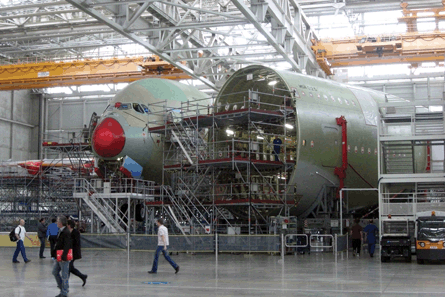Airbus is confident that it has put the A380's production woes behind it after the latest initiatives have seen a significant improvement in the completion state of subassemblies when they reach the assembly line, which has dramatically reduced the out-of-sequence workload.
The airframer struggled to keep output of the superjumbo on track last year as production issues combined with the complication of having to manage several customer deferrals caused deliveries to fall well short of target.
In total, 10 A380s were delivered in 2009 - two fewer than 2008 - but Airbus is confident that deliveries will more than double this year as monthly output gradually rises from two to three aircraft over the next 18 months.
 |
|---|
© Airbus |
Alain Flourens, who heads the A380 programme, says that it became evident last year, as Airbus prepared to deliver the first "Wave 2" aircraft with redesigned wiring harnesses, that more changes were needed. These changes are now bearing fruit.
"We realised that a significant amount of additional work was needed to update the digital mock-ups [DMU], the design activity and the following manufacturing and engineering activities," he says.
"We enforced a very strict quality gate around the DMU, starting from the first step at the release of drawings for production - which means we have more coming out right first time."
The result has been an 80% reduction in the backlog of production drawings, while out-of-sequence work needed in Hamburg and Toulouse declined by half during the course of 2009. Airbus says that since the beginning of 2007, out-of-sequence work has been reduced by a factor of seven.
Flourens estimates that the A380's production lead time has fallen by around 40% over the past 12 months, while over the same period the number of displaced workers on the Toulouse assembly line has been halved to about 1,000.
A more recent initiative, dubbed "stop and fix", was implemented late last year. This requires workers to halt production to resolve problems rather than push them on to the next stage for later rectification.
The result of these initiatives is that, finally, A380 subassemblies have been arriving in Toulouse at the correct state of readiness, meaning they are configured for the power-on process when assembly begins, says Flourens.
Airbus is continuing to drive down outstanding work as the output level ramps up, which should see the number of displaced workers progressively reduced during 2010-11, he adds.
The handover process for the 525-seater has also been tightened up, with acceptance now typically taking around eight days - and sometimes just five. "This is a good target for such a big aircraft," says Flourens.
Source: Flight International























